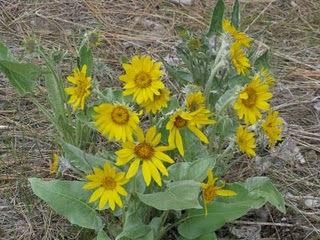Because I could't go so far with vertigo, I collected all the information I could about animals and nature that are in Glen Park!
ISLAIS CREEK
Is Islais Creek supports ecosystem characterized by water-loving plants such as willow trees, horsetail, seep monkey flower and red columbine. These plants provide habitat for adult and larval insects, which in turn in amphibians, reptiles, and birds, some of which travel from South America. The creek is important to migratory and resident songbirds, and is one of the few remaining spots in San Francisco where they can take advantage of a fresh water source.
Willow trees |
Horsetail |
Seep monkey flowe |
Red Columbine |
Red Columbine |
In spring a variety of native wildflowers including the California poppy, blue-eyed grass, checkerbloom, and mules ears add oranges, blues, pinks and yellows to the canyon.
Poppy |
Blue-eyed grass |
Checkerbloom |
Mules ears |
COASTAL SCRUB
Farther north along the road there are the dense shrubs that comprise the coastal scrub community. Here, coyote brush, coastal sage, bee plant, and California blackberry to provide habitat for a wide array of birds.
Coastal scrub provides important structure for bird nests, and the plants are an food source for birds. Coyote brush alone provides habitat for more than 250 species of insects, which are food source for birds like swallows and black phoebes as well as other animals such as California alligator and western fence lizards. The California blackberry often are around the coyote brush, bearing fruit for birds, raccoons, and humans throughout the summer. Bee plant is aptly named, as it attracts not only bumblebees and honeybees, but more than 20 species of non-stinging solitary bees.
 |
| Coyote brush |
 |
| Coyote brush |
 |
| California blackberry |
 |
Black Phoebe |
 |
| Swallow |
URBAN FOREST
Most of the forest at Glen Canyon Park is composed of blue gum eucalyptus, cypress, and pine trees, and accounts for over 17 acres of the park. These trees were planted around San Francisco beginning in the 19th century and have significant value for both wildlife and people, even though they are invasive species. Owls and hawks nest and hunt on them.
 |
| Cypress |
 |
| Pine trees |
 |
Burrowing Owl |
ANIMAL
In this area we can find so many differnt species of birds, and tee. Thare also the coyotes with their reddish gray to brown fur.
 |
| Coyote |
GEOLOGY
Throughout the park you will find outcrops of reddish rock formed from the shells of microscopic ocean-dwelling organisms called radiolaria. Millions of years ago these tiny animals lived, died, and drifted down through the deep ocean waters to the ocean floor. Eventually the combination of pressure and time turned these microscopic organisms into the rock we call radiolarian chert. The movements of the tectonic plates eventually brought the chert close to the shore. As the Farallon plate subducted under the Continental plate, the rocks of Glen Canyon were scraped off, scrambled up, and pitched upon the land.
Scarce water supply and shallow soils make the rock outcrops a challenging habitat for plant life; only well-adapted species survive. There are many example of plant adaptation like Dudleya, it has adapted to this dry environment and Lichens who release special chemicals sostance to obtain nutrients from the rock . Reptiles like California alligator lizards and San Francisco garter snakes take advantage of the solar exposure on the rock outcrops.
 |
| Outcrops of reddish rock |
 |
Outcrops of reddish rock |
 |
Outcrops of reddish rock |
There are no plant, bird or animal species in the Glen Canyon Park
The Friends of Glen Canyon Park and the Glen Park Association continue to work to improve the park's recreational facilities and restore its natural areas.








.jpg)

.jpg)





No comments:
Post a Comment